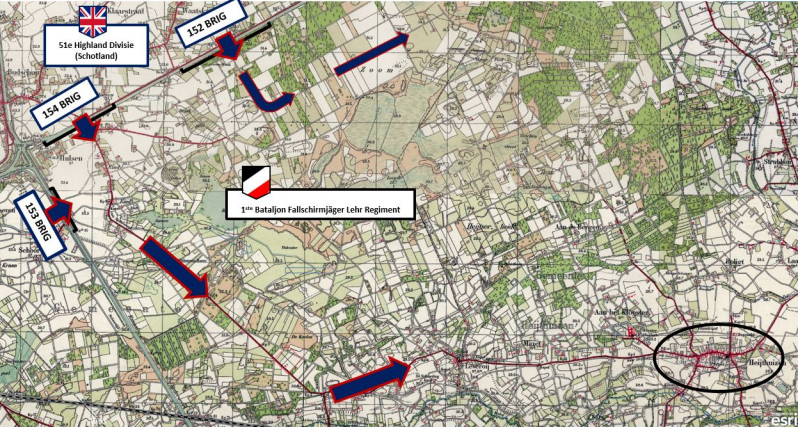
The Gordon Highlanders statue in Aberdeen
On Saturday 5 August, the nephew (Bill Gibb and his wife Linda) of Private Forbes Gibb, 1st Battalion, The Gordon Highlanders visited his uncle's grave at The Britsh Nederweert War Cemetery for the first time. They were welcomed by the adopter of the grave, Roel Rijks, and members of the Adoption Graves Foundation Nederweert.
Forbes Gibb was the youngest son of Alexander Roger and Catherina Ann Gibb of Fraserburg, Aberdeenshire.
Forbes was born on 19 August 1921 in Shore Street, Fraserburgh and lived here until he was called up to serve in the British Army during the Second World War.


He worked as a baker in the family bakery along with his father Sandy and his two brothers Alec and James. Private Gibb died, aged 23, on November 14, 1944 during the commencement of Operation Ascot.
When his unit was waiting for the attack on the canals, they were hit by a German shell. Eight Gordon Highlanders, including Private Gibb, were killed.
Bill Gibb and his wife Linda are very grateful to the adopter and the Adoption Graves Foundation Nederweert for their efforts to continue to honor the fallen soldiers.

As part of a major Operation Mallard (Mallard was the responsibility of the British 12th Corps) planned along the canal from Nederweert to Wessem, the Scottish 51st Highland Division was tasked with attacking Nederweert and achieving a crossing at Schoor (Operation Ascot).
-Bristol 53 Welsh Division
-Winsor 7 Armor Division
-Chester 49 West Riding Division
The Scots were also instructed to secure the lock at Hulsen and the island in Nederweert plus to realize a crossing towards Nederweert-Eind over the Noordervaart and the Wessem Canal.
With this, the Allies wanted to realize the capture of Heythuysen and Roggel and to drive the German troops further east. On November 14, 1944, at 4:00 PM, the attack began. For an hour and a half, 1,500 shells per minute were fired over the canals.
The biggest challenge for the Allies was crossing the various waterways, especially for heavy vehicles and support equipment. Characteristic of these operations was the high concentration of engineering resources (bridges) to ultimately be able to carry out the assignments.
The fighting in central Limburg is also known as the Battle of the Canals.

British infantrymen marching single file along muddy road in the rain and smoke from their own barrage toward Wessen Canal which they will cross under heavy German mortar fire during attack in Holland. Copyright Time Inc

British infantrymen unfold their wood and canvas assault boats and prepare to make a dash across the Wessem Canal under heavy German mortar fire during attack in Holland. Copyright Time Inc
In memory of:
Arhur Johnson
Thomas McAllister
Jmaes Slater James
Mitchell Thomas
John Quinn
Henry Thompsom
John Leslie Wood
Photos: Gibb Family and Adoption Graves Foundation Nederweert




